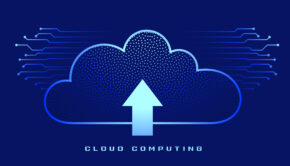Cloud software for businesses: staying competitive amidst advancing technologies
Modern businesses are seeking new ways to leverage technology to enhance their workflow; much of recent developments is occurring through software. Where fundamental enterprise applications used to be comprised of on-premise softwares, now, cloud applications are dominating the software field.
Not only are cloud apps more convenient to install and maintain, they also offer benefits and features unique to the cloud industry: browser-based applications that are accessible from anywhere, no-contract subscriptions under a pay-as-you-use model, zero internal server and application maintenance, professional customer support, and instant add-on features.
Yet there’s also a larger take: Cloud platforms have become vehicles that carry businesses and consumers through waves of technological developments. At its forefront are industry leading software players — Microsoft, Amazon, IBM, Google, Oracle. Through connectivity-centric developments, they are driving rapid changes in the global network in key ways that enable more accessible and intuitive enterprise applications. The cloud industry is shifting how applications run; how services are deployed; how businesses interact with clients; and how the world interacts with the digital.
Streamlined app development via over-the-air updates
We often hear that cloud applications come with automatic updates. What does that mean? Companies used to have to perform software installations every couple of years when their existing software like QuickBooks, Microsoft Office, or Microsoft SQL Server become outdated. IT admins were also charged with the routine task of patching servers. That’s changed for modernized businesses: Firms that have migrated to the cloud have retired software upkeep operations. Enterprise cloud applications get updated over the air, so in-browser interfaces always stay current. And IT departments are spending more time developing innovative solutions instead.
Automatic updates are actually more powerful than that. It enables cloud developers to make minor application adjustments and instantly implement them across its platforms and users. Adobe, for example, announces monthly feature updates to Adobe Experience Cloud, the company’s digital intelligence solution. These updates often include fixes and additions to its analytics, mobile, social, and campaign apps. Such frequent software modification is only possible in cloud applications, as it’s impractical for users or a client IT department to manually keep up with monthly installs, especially across a large business network. Now, users can consult a cloud service provider’s application release notes to view the latest software improvements and immediately leverage new features to enhance their own solutions.
More integrated cloud solutions
Cloud advancement is fueled in part by deeper levels of integration. Developers and businesses are realizing the value of integrated solutions rather than island applications, and that’s directly related to the development of the Internet of Things. As IoT becomes more prevalent in the business sphere, e.g. companies are using sensor-embedded equipments to collect data, manage assets, and automate services – a centralized platform to manage end-to-end operations becomes a requirement.
The cloud industry itself is pushing for more integrated services as well; first, to enhance user experience; second, for IoT standardization where well-integrated cloud platforms make better foundations for connected things.
For example, IBM cloud services cover artificial intelligence technology for workflow automation; risk management applications; platforms for sales management, financial management, and marketing; HR and VMware solutions. For platform development industries, IBM offers high-performance computing resources, developers solutions from cloud migration to software management, and packages that allow clients to build and manage private clouds. Cloud solutions by Microsoft Azure are no less comprehensive: they include industry-specific integrated apps for healthcare, financial, retail, and manufacturing that meet their data and security needs, audience reach, and IoT development.
The increasing availability of highly customizable end-to-end cloud platforms impacts large enterprises to family-owned businesses. It’s very convenient for a local retail, for instance, to adopt one cloud solution with data-driven applications for marketing, payment, and store management.
The benefit is just as pronounced among marketing firms, as new IoT developments are creating fresh opportunities for them to reach consumers. For them, cloud resources are pretty much an essential. Modern marketing relies on data analytics and machine learning, which calls for high-performance computing resources and robust servers. Also, they need a way to connect almost seamlessly to the IoT network to gather data and deliver content. Rather than piecing together applications, it makes more sense to subscribe to an integrated marketing solution.
Adobe’s cloud marketing solution is one option. Its applications enable cross-channel campaigns, data analytics, and conversion rate optimization. With Adobe Target, companies can personalize content for IoT devices from consumer electronics to gas station pump displays and vending machines. Retails are also able to embed iBeacon technology for location-based marketing.
Adobe has integrated its marketing cloud, advertising cloud, analytics cloud applications under a unified platform so businesses can access and manage multiple facets of modern marketing through one user-friendly interface.
Adobe case study: Travelocity’s cloud marketing success
Travelocity used Adobe Marketing to launch a creative campaign called “My Deals.” Customers build their own package with a fit price, dates, travel destination, and activity; the information enters Adobe Campaign, a cloud application that automatically matches customer selections to hotel, airline, and car rental deals in Travelocity’s database to generate personalized email alerts. After the campaign was created, the rest of the marketing process is automated and scalable to more custom settings. The result was a 40% increase in email open rate for Travelocity.
Travelocity also experienced more marketing agility. When “Cheap Flight Day” was heard on the morning news, marketing staff were able to quickly generate relevant targeted emails to get recent airfare customers to return to Travelocity’s website. Quoting Tony Arbelaez, Senior Technology Manager at Travelocity, “By evening, our emails were live. If you looked at our competitors, we were the only ones to react so quickly.”
Beyond digital marketing, integrated cloud applications also help streamline multiple internal business operations. For example, Oracle Cloud Platform enables clients to drive innovation through its data warehousing, analytics, and application development. One popular solution is its Platform-as-a-Service offering that strings together IoT cloud, Supply Chain Management (SCM) cloud, and Big Data cloud to allow companies implement sensor-enabled equipments and automate tasks like data collection, product monitoring, fleet management, and supply chain planning. Advanced analytics also lets clients make better informed decisions based on data-driven insights.
Oracle case study: AT&T’s move to the cloud to speed up services
One of Oracle’s biggest clients is AT&T. AT&T is in the process of virtualization 75% of its core functions within the next couple of years; it’s currently working to move thousands of internal databases to Oracle’s public cloud infrastructure. One way AT&T expects to leverage new cloud services is for optimizing workforce management. The company dispatches about 70,000 trucks daily to get technicians out to customers, which takes thousands of people to administer efficiently. With cloud tools that combine real-time data analytics and machine learning algorithms, AT&T can improve its fleet management and speed up service dispatch. Practically speaking, that means they can potentially cut their current four-hour appointment windows down to one-hour.
Minimizing customer wait time is one goal, per AT&T communications CEO John Donovan. Cloud tools will let you gain instant insights that impact traffic like weather and neighborhood constructions, he told IT World, then with that data, fleet operations can become more precise and customers can get their services faster. Also, because cloud applications instantly sync across the enterprise, project turnaround time is decreased. For example, staff can easily improve their fleet dispatch strategy and make the changes effective in a day.
Migrating to cloud applications
In many ways, the ease of adopting cloud applications is making on-premise servers less practical to maintain. Oracle CEO Mark Hurd pointed out that for just deploying security patches, the company’s on-premise customers are 14 months behind its public server updates. He said private servers are more tedious to update because they have OS dependent features in different versions of the database. In a public cloud, users don’t have to deal with server updates. Considering how businesses are expected to scale with growing networks and data, migrating to a public cloud infrastructure is more viable and almost inevitable.
Still, for new cloud clients, the migration process can be intricate and should be executed carefully. Cloud software environment differ drastically from on-premise environments; for one, cloud apps are designed to be multi-tenant whereas traditional softwares have less flexible programming, so it’s hard to expect one-to-one conversions.
There are also data structure differences to account for. Most public cloud servers default to NoSQL (Not-only-SQL) while most private servers use relational data.
For businesses, cloud migration will require detailed planning, multiple department collaboration, and where necessary, outside consultants.
There are cloud migration solutions on the market to smooth the transition. For example, Oracle offers automated database migration tools for customers to move an on-premise Oracle database to its public cloud. Companies can also leverage Amazon Web Services Cloud Data Migration to move internal applications to Amazon-hosted servers in comfortable increments. Further, AWS has outlined a several strategies to prevent cloud migration from interrupting services.
Finally, potential clients should take time to research different cloud applications, platforms, and vendors; compare software packages and longterm benefits; consider scalability; and ask questions. Once a firm settles in the cloud, it can expect to profit from all that modern cloud computing has to offer — high-performance data warehousing, robust platform for developers, and streamlined applications that will keep getting better with every cloud update.















